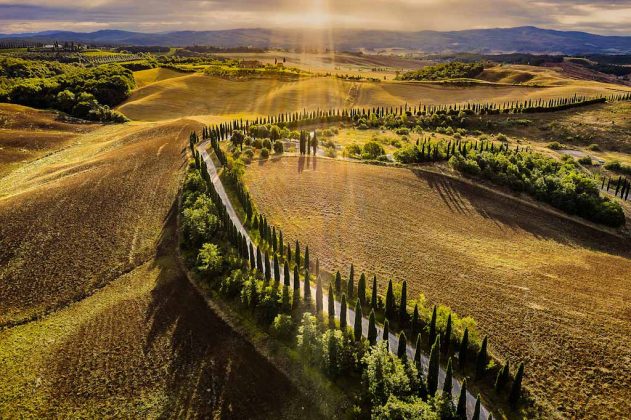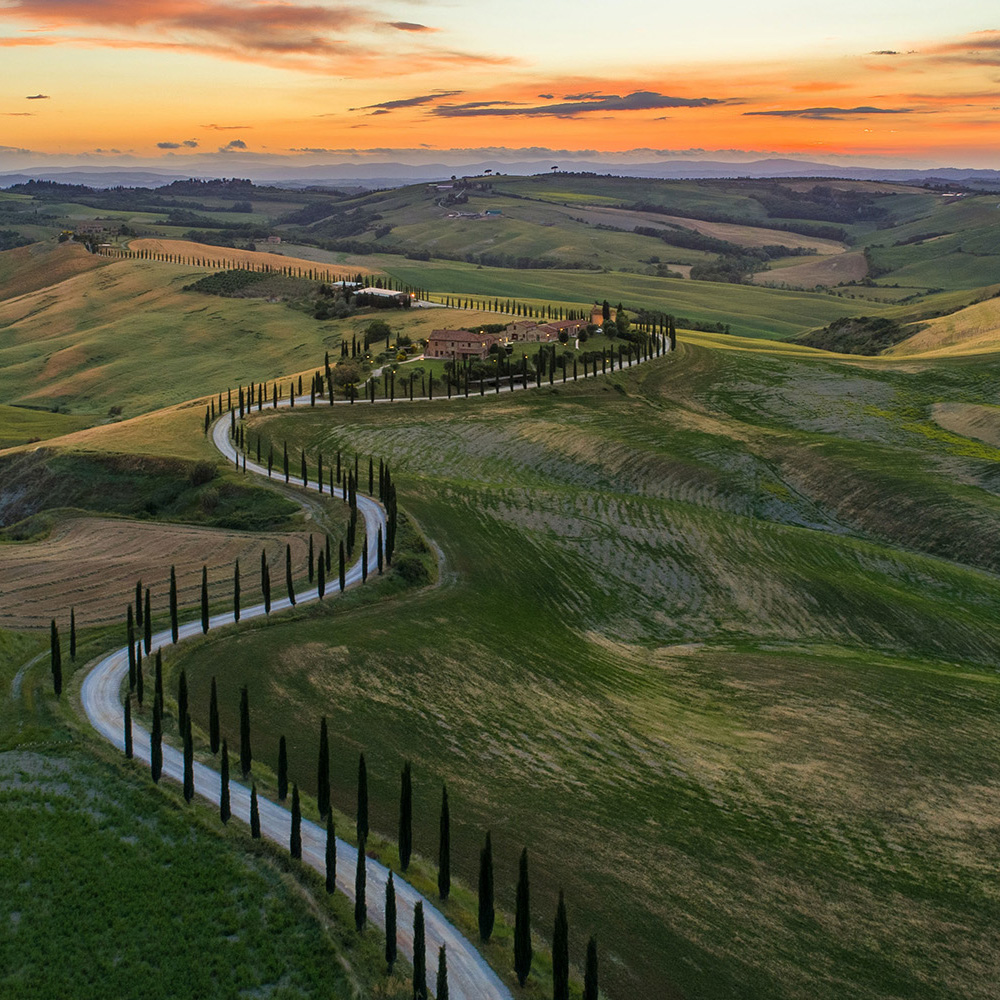Description
Weather in Tuscany: Climate, Seasons, and Average Monthly Temperature
World-famous for its food, wine and rolling, picturesque landscapes, the region of Tuscany (Toscana, in Italian) is also home to some of Italy’s greatest cities, such as Florence (the provincial capital), Siena, Pisa, and Lucca. As one of the most sought-after destinations for travelers and one of Italy’s best-known regions, Tuscany welcomes more than 94 million visitors annually.
Tuscany is located in central Italy. It’s the third-largest region on mainland Italy, and its varied terrain includes a stretch of coastline along the Ligurian and Tyrrhenian Seas (both part of the Mediterranean), sections of the Apennine Alps, and hilly inland areas where most of its major cities lie.
Tuscany’s Mediterranean climate is diverse, but all parts of the region experience four seasons of weather. The best times to visit Tuscany are in late spring and early autumn, when dining alfresco and swimming in the sea are feasible. Even if you plan to travel in winter, you’ll find that Tuscany has relatively little rainfall after December, so there’s a good chance you’ll experience a fair amount of sunshine during your stay.
Fall Flooding in Tuscany
Although it does not happen every year, coastal and northern areas of Tuscany have seen increasingly intense and frequent autumn thunderstorms, with violent wind and heavy rain. These have resulted in mudslides, flooding, road closures, and loss of life. If you plan to visit Tuscany in October, November, or early December, expect wet weather and keep an eye and ear tuned to local weather conditions, especially if you’re renting a car or planning to do any hiking or biking in the countryside.
Fast Climate Facts
Hottest Month: July (86 degrees Fahrenheit / 30 degrees Celsius)
Coldest Month: January (37 degrees Fahrenheit / 3 degrees Celsius)
Wettest Month: November (4 inches / 11 centimeters)
Cities, Beaches, and Mountains of Tuscany
The weather in Tuscany varies according to the traditional seasons of winter, spring, summer and fall. There are also variations based on altitude, terrain, distance from the sea and climate factors. Tuscany’s most famous cities—including Florence, Siena, Pisa and Lucca—as well as its wine-growing regions are all located inland, meaning their summers are hotter and winters reliably cold. The seaside cities and towns of Livorno, Marina di Grosseto, the Argentario Peninsula and the islands of the Tuscan Archipelago are cooled by summer breezes, which turn into strong, frigidly cold winds in the winter months. In the Apuan Alps, which form part of the Apennine mountain chain, summers are shorter and cooler, and winters are long and often snowy.
Summer in Tuscany
June ushers in summer rather pleasantly; however, by July and August the sweltering heat and humidity are in full force, especially in inland cities. Temps typically reach 86 degrees Fahrenheit (30 degrees Celsius) during the day and bottom out around 64 degrees Fahrenheit (18 degrees Celsius) at night. These are averages; it’s not unheard for a heatwave to push the mercury above 100 degrees Fahrenheit—again, especially in landlocked cities that don’t benefit from sea breezes.
Expect some relief from the heat if you head to the seashore or the mountains, but don’t underestimate that hot Mediterranean sun. Wherever you go, bring sunscreen, sunglasses and plenty of water. If you hit a beach resort, bring a beach umbrella or plan on renting one at a “stabilimenti,” or beach club,
What to Pack: When under the Tuscan sun, it’s best to bring light clothing made of breathable fabrics. Bermuda shorts, T-shirts, dresses, wide-brim hats, sandals, sunglasses, and sunscreen are key. Throw in a bathing suit for trips to the shore or a refreshing swim in a pool. Don’t forget to carry a thin shawl for covering your bare shoulders and long pants to hide your knees when entering churches; most have strict modesty dress codes, which apply to both women and men.
Average Temperatures by Month:
June: 81 degrees F (27 degrees C) / 59 degrees F (15 degrees C)
July: 86 degrees F (30 degrees C) / 64 degrees F (18 degrees C)
August: 86 degrees F (30 degrees C) / 63 degrees F (17 degrees C)
Fall in Tuscany
The sight of Italians wearing stylish scarves around their necks is a sure sign that autumn (autunno) has arrived. Tuscany is at its most beautiful in the fall, particularly during the grape (vendemmia) and olive (raccolta) harvests. In the early fall, especially, days are warm and clear, contrasted with crisp, cool evenings that require a jacket. During this period, the thermometer rarely dips below 45 degrees F (7 degrees C). Expect November to be colder and rainier.
What to Pack: Dressing in layers prepares you for all weather possibilities. Leave your shorts and sandals at home and opt for long-sleeved shirts, jeans, or other long pants, fleece hoodies, cotton sweaters, and puffy vests or jackets. These pieces should suffice for most of the season.
Since November is the rainiest month, we also recommend carrying a compact and foldable waterproof poncho. Not only will it keep you dry, but it’s also less cumbersome than an umbrella, especially on gusty days.
Average Temperatures by Month:
September: 81 degrees F (27 degrees C) / 59 degrees F (15 degrees C)
October: 72 degrees F (22 degrees C) / 52 degrees F (11 degrees C)
November: 61 degrees F (16 degrees C) / 45 degrees F (7 degrees C)
Winter in Tuscany
December, January, and February in Tuscany are a mixed bag. Expect brilliant blue skies one moment
and overcast, gray ones the next. Nights can be downright bone-chillingly cold; the higher in the hills you are, the colder it gets. By late October, beach resorts have closed up, though a few hotels might remain open. If you plan to head to the sea in the wintertime, expect cold weather, rough seas, and high winds, and having the place nearly to yourself.Temperatures in most of the region hover between 53 degrees F (11 degrees C) and 38 degrees F (4 degrees C), yet have been known to fall below freezing during cold spells. Light snowfall is not uncommon, though it usually doesn’t stick for more than a couple of days. The exception is in the mountains, where winter snowfall is typical, especially in January and February.
What to Pack: Heavy coats or hooded parkas, warm caps, scarves and gloves, plus sturdy all-weather
footwear should provide the optimum level of comfort. Raingear is always a good idea, as winter thunder and lightning storms (tempeste) are known to blow right through an area, wreaking havoc with little or no warning.
Average Temperatures by Month:
December: 54 degrees F (12 degrees C) / 40 degrees F (4 degrees C)
January: 52 degrees F (11 degrees C) / 37 degrees F (3 degrees C)
February: 55 degrees F (13 degrees C) / 37 degrees F (3 degrees C)
Spring in Tuscany
March is usually quite windy and on the chilly side; you may even encounter a late-season snowstorm. After Easter, things start to warm up. The month of April is the second wettest of the year in Tuscany, so don’t be surprised if you caught in a spring shower or two. Not to worry. By the end of May, things usually settle down and summer feels just around the corner.
What to Pack: As a rule of thumb, the earlier in spring you visit Tuscany, the heavier and more clothing you should bring. To play it safe, pack a medium-weight denim jacket, heavy cotton trousers, long-sleeved shirts, and a cozy scarf (all musts this time of year). A water-resistant jacket and pair of shoes or boots are also a good idea. Hedge your bets by packing a variety of cool- and warm-weather tops and sweaters with you because, like in the fall, layering is the best defense against fluctuating weather conditions.
Average Temperatures by Month:
March: 61 degrees F (16 degrees C) / 43 degrees F (6 degrees C)
April: 66 degrees F (19 degrees C) / 46 degrees F (8 degrees C)
May: 73 degrees F (23 degrees C) / 54 degrees F (12 degrees C)




